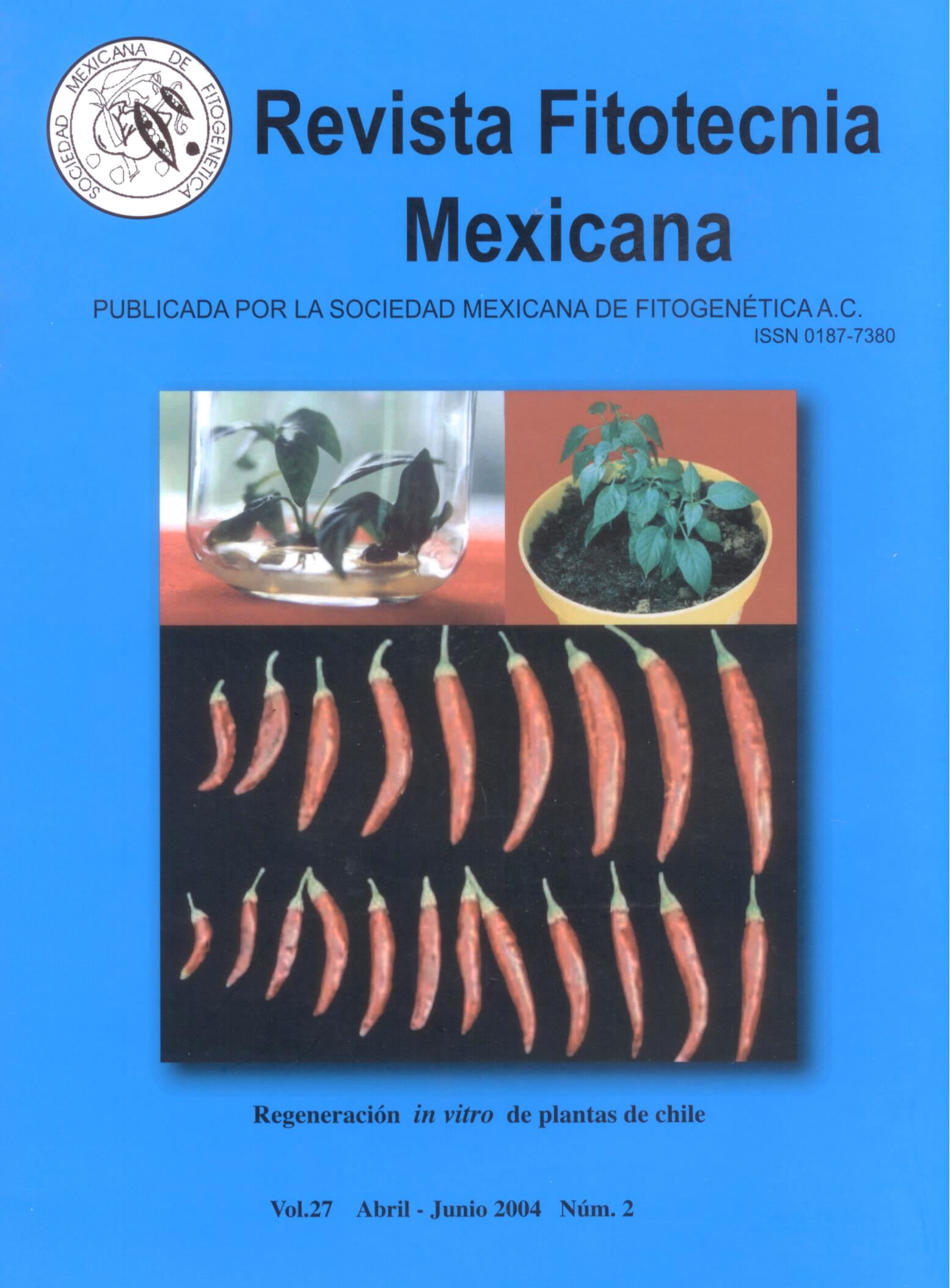EFFICIENCY OF INDIRECT SELECTION IN WHEAT BREEDING FOR WATER STRESS AND NONWATER STRESS ENVIRONMENTS
Main Article Content
Abstract
In the breeding of plants for drought environments, it must be decided whether to select directly in the presence of water stress or
indirectly in optimum environments. The relative effectiveness of these two strategies depends upon the expectation of genetic parameters determining the selection response and genetic correlations between yield under stress and non-stress environments. The objective of this study was to compare six environments with different moisture regimes based on the estimation of genetic variance and heretability of grain yield, for two groups of 25 M6 inbred lines of wheat in water stress and non-water stress environments. Both groups were tested in contrasting rainfed environments at Montecillo and Tecámac, Edo. de México and under drought and irrigated environments at Tlaltizapán, Morelos and Montecillo, Edo. de México. Grain yield and genetic variance and heretability estimates in both groups of lines were reduced as water stress increased. Estimates of relative expected indirect selection over direct selection indicated that selection and evaluation in the same environment would result in greater yields gains under water stress or non-water stress environments. The relative magnitude of heritability in stressed and non-stressed environments is not sufficient to choose the optimum environment for selection, due to the phenotypic differences that can be of opposite sign in different environments.

